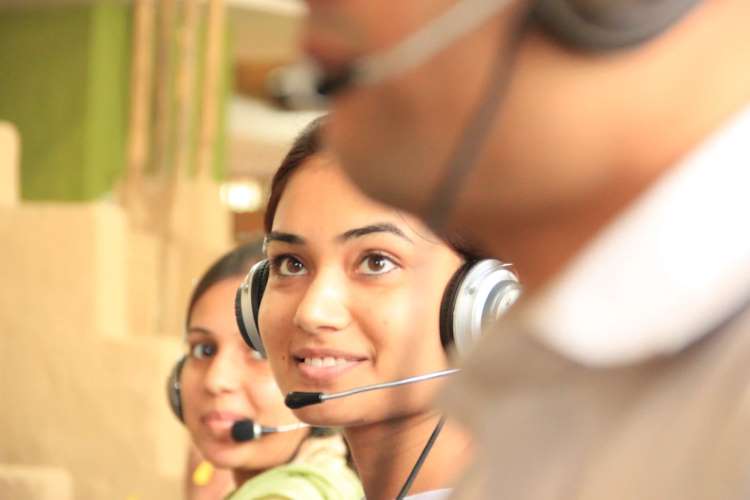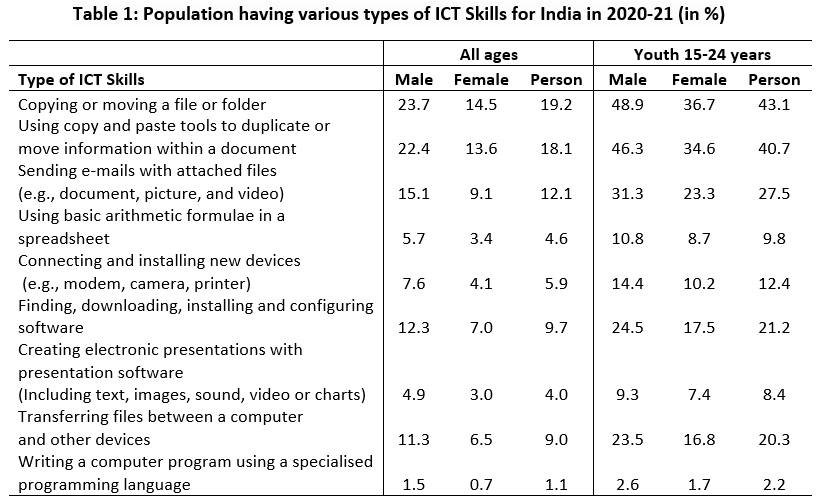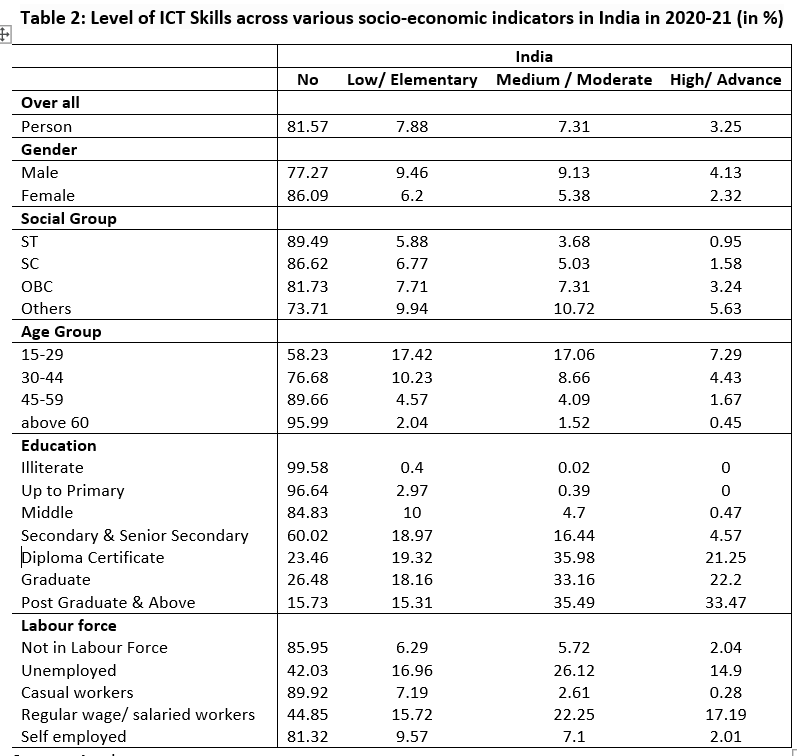
ICT skills gap: India has initiated several programmes under the Digital India initiative, focusing on digital literacy and skill enhancement. Introduced in 2015, Digital India sets out to transform the country into a society empowered by digital technology founded on knowledge. This initiative is built on principles such as providing digital access, fostering digital inclusion, empowering individuals through digital means, and bridging the digital divide.
DI concentrates on three core components: Making digital infrastructure an essential service accessible to all citizens, delivering governance and services on-demand, and empowering individuals through digital literacy and skills development. The goal is to leverage digital technologies to enhance the quality of life for every Indian while simultaneously boosting India’s digital economy, attracting investment, and creating employment opportunities, and enhancing India’s digital technological capabilities. The target is to make India the third-largest economy, reaching $5 trillion by 2027.
READ I Navigating climate finance — from greenbacks to green bonds
The rapidly changing technology landscape has profound implications for industries, businesses, and the future of work. Industry 4.0 has driven demand for a new breed of skilled workforce. India has also embraced Industry 4.0 in specific sectors, making strides in manufacturing and various others that require skilled ICT personnel. The COVID-19 pandemic accelerated the adoption of digital operations across sectors, further increasing the demand for ICT skills.
Government initiatives such as the direct benefit transfer scheme, digitisation of land and property records, e-office, GST, internet banking, Fast-tag, UPI payments, and online platforms for shopping, dining, transportation, and other essential services have amplified the demand for ICT-skilled manpower in the country.
To meet the demand for ICT-skilled manpower, the government, both at the Union and state levels, has implemented various plans, policies, programmes, and schemes. These initiatives aim to provide education and skills in an inclusive manner, ensuring that no one is left behind. The goal is to make India the skill capital of the world.
Progress in acquiring ICT skills
According to the Multiple Indicator Survey data released by the ministry of statistics and programme implementation (MoSPI) in March 2023, there is a glaring shortage of ICT skills in the country. The data, based on a sample of 1,163,416 individuals, reveals that males possess a higher share of ICT skills than females across all age groups. Only a small percentage of the male population (23.7%) possesses elementary ICT skills like copying and moving files or folders, the highest among all ICT skills.
For females, the situation is even more dire, with less than 15 percent possessing these skills. In terms of advanced ICT skills, only 1.5 percent of males can write computer programs using specialised programming languages. Females fare worse, with only 0.7 percent possessing such skills. Among the youth (15-24 years), 48 percent of males have elementary ICT skills, while females make up 36 percent. In the highest skill category, a minuscule proportion of both males (2.6%) and females (1.7%) possess ICT skills.

ICT skills are categorised into four groups based on combined scores: No ICT skills (Score 0), Elementary (Score 1-3), Moderate (Score 4-6), and Advanced (Score 7-9). Only 18.5% of the population possesses at least one type of ICT skill. The share of individuals with advanced ICT skills is only 3.25 percent, with females having less than males. Among social categories, individuals belonging to the general caste have more ICT skills at each level.
The highest proportion of advanced ICT skills is found among youth (15-29 age group), followed by the 30-44 age group, and is lowest among those aged 60 and above. As expected, the proportion of high ICT skills increases with higher levels of education. Regular and wage-employed individuals have relatively higher ICT skills (17.2 percent) compared to the unemployed (14.9 percent). Persons not in the labor force, casual laborers, and self-employed individuals have a lower share of advanced ICT skills.

The most significant challenge lies in the large population lacking ICT skills. Achieving the digital revolution’s goal is impossible without rapidly increasing ICT skills among the population. Accelerated digitalisation will facilitate the swift adoption of new technologies, paving the way for the transition to Industry 4.0.
However, disparities persist among social categories in acquiring ICT skills. There is a substantial demand for ICT skills, necessitating increased investments and inclusive policies to enhance these skills. This is vital not only to harness the demographic dividend but also to achieve Sustainable Development Goal (SDG) 4.4.1 by 2030.
(Puneet Kumar Shrivastav is faculty at NILERD, New Delhi. Ishwar Chandra Awasthi is professor at IHD, New Delhi. Views expressed are personal.)
